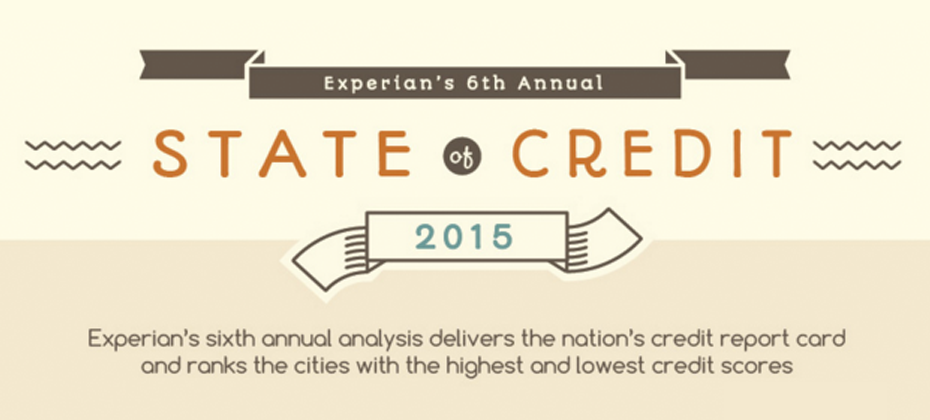All posts by Kerry Rivera

It’s official. Millennials have surpassed Baby Boomers in population size, according to the US Census. And while they are quick to adopt the “selfie” and all things social, they have been slow to embrace the world of credit. Sure, there’s been increased regulation over the past decade, and coming into adulthood in the midst of the Great Recession hasn’t helped. But don’t count Millennials out of the credit game just yet. A deeper, more segmented view of this digital-dependent generation shows a very diverse population with plenty of opportunity for lenders. Plus, their sheer size in numbers and $200 billion in annual buying power demand financial institutions evolve to accommodate this massive market. As Gen Y comes of age, there is growing evidence they are open to building and growing their personal credit history. But if financial institutions wish to capture the attention and business of this demographic, they must adapt, leveraging deeper segmentation insights with more effective prospecting strategies to reach them. Experian's data reveals key trends in terms of how this generation is utilizing credit, tips and tools to find the most credit-ready individuals, and strategies to grow the thin-file Millennials as they come of age. “Given the significance millennials play in financial services and the credit marketplace, it is crucial to understand this influential consumer segment and how they use credit as a tool,” said Michele Raneri, vice president of analytics and business development. “While this generation may not look like they are on the right track financially, it’s important to keep in mind that credit scores are built on credit experiences, and while this generation has been slower to use credit, they have plenty of opportunities to build a positive credit history.” To learn more about Millennials and credit, visit Experian.com/millennials.

This month, it’s all about parties and gift giving and holiday traditions. Fast forward a month, however, and consumers will be in a different place. Today, they are spending. In a few weeks, the focus will be on paying down bills, or perhaps seeking solutions to consolidate or transfer balances. The good news for the economy is consumers are expected to spend more this holiday season – $830 on average, a huge jump from last year’s $720. Total retail is expected to increase 5.6 percent, while ecommerce (thanks Amazon Prime) should rise 13.9 percent. Credit card originations are also trending up more than 1 percent year-over-year as of the end of the third quarter of 2015. So what does this mean for lenders? Card utilization is peaking, creating the perfect scenario for many consumers to seek balance transfers, consolidate debt and search for competitive rates, especially if they’ve been leveraging high-interest cards. A recent analysis by NerdWallet revealed consumers are more interested in shopping with store credit cards than with traditional cards this season, putting them at particular risk of sky-high rates. A deeper look at utilization revealed super-prime consumers use less than 6 percent of their available credit limits, while consumers in the deep-subprime tier use nearly every dollar allotted. “Consumers spend billions during the holidays on high-interest credit cards,” said Kyle Matthies, Experian product manager. “Many of them have excellent credit, but struggle juggling multiple payments, which can lead to delinquencies. Credit card consolidation can provide relief by lowering interest rates and simplifying repayment.” Card issuers that remain passive during this window may find their portfolios at-risk as customers take advantage of seasonal offers. Competitors who capitalize on this peak season of balance transfers will likely be mailing out offers to acquire and grow their card portfolio, as well as protect their current card base. “As banks and credit unions finish out the calendar year, they might seek one last marketing push, so a balance-transfer campaign might be the ideal play,” said Matthies. “Still, to avoid blowing the budget, it helps to leverage data to know exactly who to target – both within and outside the card portfolio.” Specific models and/or tools can identify who to try to retain, as well as provide insights on whom to conquest from the outside. An index can additionally offer guidance on when to lower APRs, sweeten rewards and increase credit limits for specific consumers. The post-holiday balance-transfer wave is coming. The question is which lenders will be best prepared to protect and grow their respective card portfolios.

Hello from the other side ... While Adele scores big on the Billboard Hot 100 by crooning of coming to terms with a lover from the past, a new Experian “State of Credit” reveals we are officially on the “other side” of the recession – at least if you’re looking at the nation’s credit scores. While the bottom of the Great Recession was reached in the second quarter of 2009, steady job growth was not seen until 2011, and even since, some economists claim it has been a "Tortoise Recovery.” But key findings from Experian’s 6th annual study, ranking top and bottom cities across the nation in regards to credit, suggests the U.S. is strong. “If I were to give a grade to the overall picture of credit in the United States, I would give it an A minus,” said Michele Raneri, Experian’s vice president of analytics and new business development. “I’m optimistic about the state of credit as we are seeing more loans being extended, late payments are decreasing and consumers are continuing to gain more confidence in originating loans. There definitely is growth and momentum — we’re back to prerecession levels in nearly every category, which means lenders are in a prime position to capitalize on this market and foster business growth.” Which states topped the credit charts? As in previous years, Minnesota continues to shine with three of its cities — Mankato, Rochester and Minneapolis — leading with credit scores of 706, 705 and 704, respectively. Greenwood, Miss. and Albany, Ga. ranked the lowest with scores of 612 and 622. While still at the bottom of the list with a score of 612, Greenwood, Miss., residents did improve their score by three points, more than any other city in the bottom 10. Overall, the report reveals the national credit score increased by three points over the last year (and by five points since 2013) and the 10 cities with the highest credit scores in the nation increased their scores by an average of 1.8 points. Additionally, bankcards, retail cards and mortgage lending showed significant growth, making this year’s study an indicator of the nation’s confidence in the credit market. Just in time for the election year, this year’s study includes insight into how residents of these top and bottom metropolitan statistical areas (MSAs) identify politically. The study found that half of the highest-scoring cities have residents whose views skew more middle of the road, while residents of lower-scoring cities are more likely to lean conservative. The full lists of the top 10 and bottom 10 cities are featured (scores are rounded to the nearest whole number). Detailed study highlights include the following changes over the last year: The national VantageScore® credit score is up by three points, from 666 to 669. Bankcard lending continues to increase, with new bankcards up 7.7 percent. The average number of bankcards per consumer is up 2.8 percent to 2.24 cards. Retail card lending also is on the rise, with a 10.8 percent increase in new originations. The average number of retail cards per consumer is up 0.3 percent to 1.55 cards from last year and up by 7 percent since 2013. Instances of late payments (includes bankcard and retail) decreased by 4.4 percent over the last year and by 17.3 percent since the height of the recession in 2010. Average debt2 is up 2.1 percent to $29,093 per consumer. Mortgage originations increased by 42.5 percent. For a more complete look at the above cities as well as the other MSAs studied, visit http://www.livecreditsmart.com to view a fully interactive map and infographic. Purchase The Experian Market Intelligence Brief, a quarterly report that includes more than 70 charts and data trends on loan originations, outstanding loans and delinquency performance metrics spanning three years.